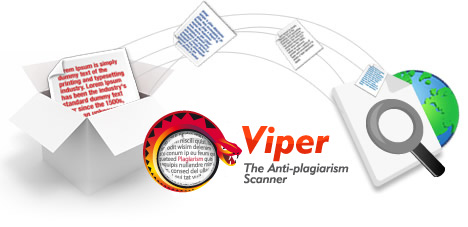ANALISIS KESESUAIAN LAHAN SEMBILAN JENIS TANAMAN UNTUK AGROFORESTRI DI NAMBO, JAWA BARAT
Sari
ABSTRACT
One of the weakness of agroforestry practices in West Java was that the pattern of species mixing was not based on site characteristics such as soil, climate, and topography and caused low production. This research was conducted to ascertain the land suitability classes for nine species, which are: Tectona grandis, Swietenia mahagony, Artocarpus integra, Nephelium lappaceum, Areca catechu, Musa sp., Zea mays, Capsicum sp. and Pennisetum purpureum, along with their optimum combination. The research was located in two sites (Acacia mangium) and community mixed plantation in Nambo village, Klapanunggal subdistrict, Bogor regency, West Java using the “Minimum Limiting Factor" method. The results showed that the land suitability class in A. mangium site and mixed plantation site for species of: T. grandis, S. mahagoni, N. lappaceum, A. catechu, Musa sp., Z. mays, Capsicum sp., and P. purpureum belong to marginal suitable; where as A. integra belongs to not suitable (N). The best combination in both sites consist of one tree species with one Multi Purpose Tree species and one food crop or P. purpureum.
Keywords: Rainfall and marginal, site, slope, suitability
ABSTRAK
Salah satu kelemahan praktik agroforestri di Jawa Barat adalah pemilihan dan pencampuran jenis belum didasarkan pada karakteristik tapak seperti tanah, iklim dan topografi yang menyebabkan produksi rendah. Penelitian ini bertujuan untuk mengetahui kesesuaian lahan sembilan jenis tanaman yaitu jati (Tectonagrandis), mahoni (Swietenia mahagoni), nangka (Artocarpus integra), rambutan (Nephelium lappaceum),pinang (Areca catechu), pisang (Musa sp.), jagung (Zea mays), cabe (Capsicum sp.) dan rumput gajah Pennisetum purpureum) serta kombinasi jenis yang optimal. Penelitian dilakukan pada dua tapak (Acacia mangium dan tanaman campuran) hutan kemasyarakatan di Desa Nambo, Kecamatan Klapanunggal Kabupaten Bogor,Jawa Barat, dengan metode faktor pembatas minimum. Hasil penelitian menunjukkan bahwa kelas kesesuaian lahan pada tapak A. mangium dan tanaman campuran untuk jati, mahoni, rambutan, pinang pisang, jagung, cabe dan rumput gajah termasuk ke dalam kategori sesuai marginal sedangkan nangka termasuk ke dalam kategori tidak sesuai. Kombinasi jenis yang paling memungkinkan adalah campuran 1 jenis tanaman kayu, 1 jenis tanaman serbaguna dan 1 jenis tanaman pangan atau rumput gajah.
Kata kunci: Curah hujan dan marginal, kesesuaian, lereng, tapak
Kata Kunci
Teks Lengkap:
PDFReferensi
Ahmad, F., & Goparaju, L. (2017). Land evaluation in terms of agroforestri suitability, an approach to improve livelihood and reduce poverty: A FAO based methodology by geospatial solution: A case study of Palamu district, Jharkhand, India. Ecological Questions,25, 67-84. http://dx.doi.org/10.12775/EQ.2017.006.
Ahmad, F., Goparaju, L., & Qayum, A. (2017). Agroforestri suitable analysis based upon nutrient availability mapping: A GIS based suitability mapping. AIMS Agriculture and Food, 2(2), 201-220.
Akiefnawati, S., & Rahayu, S. (2016). Pedoman agroforestri dalam pengelolaan Hutan Desa: pembelajaran dari Jambi. Bogor: Agroforestri Centre (ICRAF) Southeast Asia Regional Program.
Asmarhansyah, A., Badayos, R.B., Sanchez, P.B., Cruz, P.C.S., & Florece, L.M. (2017). Land suitability evaluation of abandoned tin-mining areas for agricultural development in Bangka Island, Indonesia. Journal of Degraded Mining Land, 4(4). https://doi.org/10.15243/jdmlm.2017.044.907.
Boitt, M.K., Mundia, C.N., Pellikka, P.K.E., & Kapoi, J.K. (2015). Land suitability assessment for effective crop production, a case study of Taiti Hills, Kenya. Journal of Agricultural Informatics, 6(2), 23-31. http://doi.org/10.17700/jai.2015.6.2.185.
Butarbutar, T. (2015). Reinforcing agroforestri to meet the need for timber, fruits and food into HTR scheme-based on land suitability and necessary policy: A case study in Riau. Proceedings International Conference of Indonesia Forestry Researchers III, Bogor21-22 October 2015. Bogor: Forestry Research, Development and Innovation Agency, 158-169.
Fiqa, A.P., & Laksono, R.A. (2014). Pengembangan sistem agroforestri berbasis indigenous species dan kesesuaian lahan di wilayah Kabupaten Pasuruan, Jawa Timur. Makalah disajikan dalam Seminar Nasional Agroforestri, Malang: Lembaga Ilmu Pengetahuan Indonesia.
Grant, J.C., Moffatt, T., Sethy, M., Grieve, B., & Convery, K. (2012). Site suitability and land availability for Endospermum medullosum plantation on Espiritu Santo, Vanuatu. International Forestry Review, 14(4), 424-432.
Leite, L.F.C., Iwata, B.F., & Araujo, A.S.F. (2014). Soil organic matter pools in a tropical savanna under agroforestri system in Northeastern Brazil. Revista Arvore, Vicosa-M.G, 38(4), 711-723. Retrieved from http://dx.doi.org/10.1590/S0100-67622014000400014.
Leroy, C., Sabatir, S., Wahyuni, N.S., Barczi, J.F., Dauzat, J., Laurans, M., & Auclair, D. (2009). Virtual trees and light capture: A method for optimizing agroforestry stand design. Agroforestri System, 77(1), 37-47.
Markum, A.P., Hadi, Suyono, & Muktar. (2013). Kesesuaian karakteristik agroforestri untuk pengelolaan DAS terpadu di DAS Renggung Pulau Lombok In Utomo (Eds.), Prosiding Seminar Nasional Pengelolaan DAS terpadu untuk Kesejahteraan Masyarakat, 150-162.
Rachmawaty, R., Siregar, N.C., & Rauf, A. (2016). Kesesuaian lahan tanaman jati: Studi kasus di Arboretum Kwala Bekala, Universitas Sumatera Utara. Jurnal Penelitian Dipterokarpa, 2(2), 73-82.
Rahim, S.M.A., Hasnain, S., & Shamsi, R.A. (2010). Land suitability classification of choice of tree species in District Rahim Yar Khan, Punjab, Pakistan. African Journal of Agricultural Research, 5(23), 3219-3229. http:www.academicjournals.org/AJAR.
Ritung, S., Wahyuanto., Agus, F., & Hidayat, H. (2007). Panduan evaluasi kesesuain lahan dengan contoh peta arahan penggunaan lahan Kabupaten Aceh Barat. Balai Penelitian Tanah dan Agroforestri Centre (ICRAF), Bogor. Indonesia.
Walangitan, H.D. (2014). Perencanaan rehabilitasi hutan dan lahan (RHL) berbasis kemampuan lahan di daerah tangkapan air (DTA) Danau Tondano. Jurnal Wasian, 1(2), 45-56.
Wang, L., Zhong, C., Gao, P., Xi, W., & Zhang, S. (2015). Soil infiltration characteristics in agroforestri system and their relationship with the temporal distribution of rainfall on the loess plateu in China. PLoSone, 10(4). Retrieved 7 September 2017 from https://doi.org/10.1371/journal.pone.0124767.
Wicaksono, H., Putra, E.T.S., & Muhartini, S. (2015). Kesesuaian tanaman ganyong (Canna indica L.), suweg (Amorphophallus paeoniifolius (Dennst.) Nicolson), dan ubi kayu (Manihot esculenta Crantz) pada agroforestri Perbukitan Menoreh. Vegetalika, 4(1).
Winarno, J., Rachmadhika, Y., & Supriyadi. (2010). Evaluasi kesesuaian “beberapa jenis tanaman dalam sistem wanatani di wilayah Desa Ngadipuro, Kecamatan Nguntoronadi, Kabupaten Wonogiri. Sains Tanah-Jurnal Ilmu Tanah dan Agroklimatologi, 7(2), 97-107.
DOI: https://doi.org/10.20886/jpht.2018.15.1.17-28
##submission.copyrightStatement##
JURNAL PENELITIAN HUTAN TANAMAN INDEXED BY:
Copyright of Jurnal Penelitian Hutan Tanaman (JPHT)
eISSN : 2442-8930 pISSN : 1829-6327
JPHT is licensed under a Creative Commons Attribution-NonCommercial-ShareAlike 4.0 International License.

